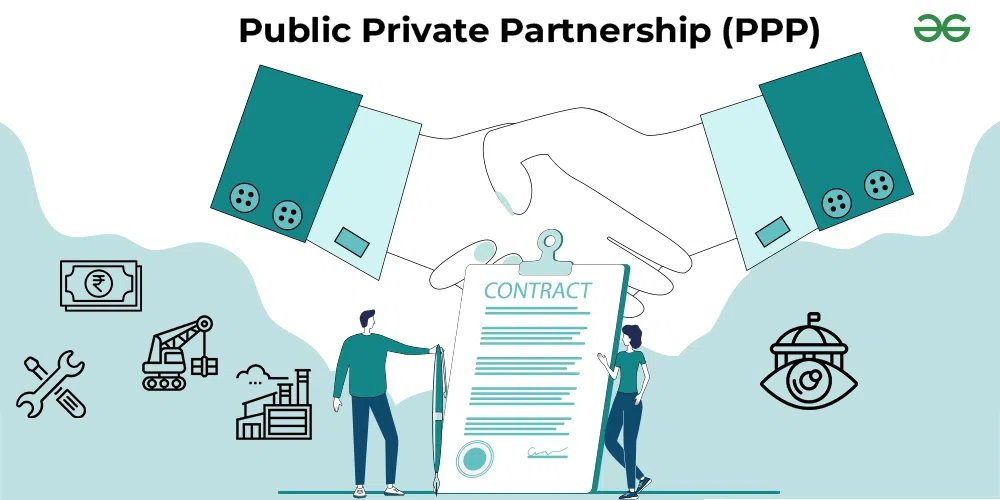Now Reading: Public-Private Partnerships: 5 Reasons Real Estate Fails Without Them
-
01
Public-Private Partnerships: 5 Reasons Real Estate Fails Without Them
Public-Private Partnerships: 5 Reasons Real Estate Fails Without Them

Table of Contents
In today’s rapidly changing real estate landscape, public-private partnerships (PPPs) have emerged as a strategic solution that bridges the gap between government objectives and private sector innovation. These collaborations are unlocking bold opportunities to transform cities, improve infrastructure, boost housing supply, and meet sustainability goals. As global markets evolve and demand for smarter, more resilient urban development grows, public-private partnerships hold the key to real estate innovation.
Real estate has traditionally relied heavily on private investment, while government authorities have focused on regulatory frameworks and land allocation. But in recent years, cities around the world have realized that sustainable development requires joint responsibility. By combining the strengths of both sectors—public oversight and private efficiency—PPPs offer a dynamic model that delivers real, measurable impact.
1. Solving the Housing Shortage Crisis with Speed and Scale

One of the most urgent challenges faced by many cities is affordable housing. Public-private partnerships are increasingly used to accelerate the delivery of cost-effective housing units by pooling government land and private sector capital.
For instance, in major cities like Mumbai, Dubai, London, and New York, governments offer underutilized land or incentives like tax breaks and fast-track approvals. Private builders, in turn, bring in technical know-how and investment to construct affordable, high-density housing. This model not only speeds up development but ensures projects meet the growing urban population’s needs while maintaining quality and accountability.
2. Driving Smart City Infrastructure with Innovation
Smart city solutions are at the heart of modern urban development. From digital utility grids to green buildings, public-private partnerships have played a critical role in implementing new technologies in real estate projects.
Private firms offer cutting-edge tech—from IoT-enabled buildings to AI-based waste management—while governments provide regulatory support and data-sharing capabilities. Together, they build resilient cities equipped for climate change, population surges, and energy efficiency.
A notable example is Singapore’s smart housing initiatives, where public agencies work with developers to create fully integrated communities with high-speed internet, smart traffic systems, and sustainable energy networks.
3. Reimagining Urban Spaces and Reviving Economies
Post-pandemic urban economies are struggling with empty commercial buildings, decaying downtown areas, and limited green space. Public-private partnerships are helping reimagine and redevelop these zones into vibrant mixed-use districts with commercial, residential, and recreational functions.
Old railway yards are being converted into commercial hubs, abandoned lots into public parks, and outdated buildings into energy-efficient co-working spaces. The private sector brings capital and vision, while public entities ensure projects align with community needs.
A well-known case is the Hudson Yards redevelopment in New York—a $25 billion PPP that turned a former rail yard into one of the most advanced and expensive real estate projects in the world, with luxury homes, offices, and green zones.
4. Reducing Project Delays and Cost Overruns
Construction delays and cost overruns are two of the most common issues in large-scale real estate development. Public-private partnerships are changing this scenario by introducing transparency, accountability, and shared risk mechanisms.
PPP agreements clearly define roles, timelines, and performance indicators. Regular audits, risk-sharing models, and milestone-based funding keep all parties aligned. Governments benefit from timely delivery, while private companies enjoy reduced regulatory friction and long-term returns on investment.
Infrastructure projects like metro rail stations, business districts, and logistic parks have shown significantly better execution records when built under PPP models, especially in countries like India, UAE, and Brazil.
5. Encouraging Sustainable and Eco-Friendly Development
Climate goals are now central to real estate planning. From solar rooftops to rainwater harvesting, sustainable features often involve high upfront costs, which private developers may avoid without incentives. Public-private partnerships allow for co-investment in green real estate that benefits both the environment and the economy.
For example, governments may subsidize energy-efficient materials or offer density bonuses for sustainable design. Meanwhile, the private sector gains recognition, operational savings, and long-term tenant demand for eco-friendly spaces.
Green buildings developed through PPPs have shown lower lifecycle costs, higher market value, and better tenant retention.
Why Public-Private Partnerships Matter More Than Ever

Global real estate is facing pressures like inflation, material shortages, urban migration, and climate change. In this complex environment, traditional development models often fall short. Public-private partnerships offer a resilient alternative by combining public sector oversight with private sector agility.
These partnerships are not just financial collaborations. They are innovation platforms that foster trust, transparency, and long-term planning. Whether it’s urban regeneration, affordable housing, or smart infrastructure, PPPs are becoming the foundation of real estate’s next growth cycle.
Conclusion: The Future of Real Estate Innovation Is Collaborative
To unlock the full potential of urban growth and real estate evolution, governments and private players must embrace public-private partnerships. With the right legal frameworks, shared vision, and strong execution plans, PPPs can lead the industry into a future defined by innovation, inclusion, and sustainability.
As more cities and countries turn to this model, we can expect a new era of real estate development—where innovation is not just encouraged but embedded in the system through powerful collaborations.
Also Read – Kamathipura Redevelopment 2025: 5 Key Reasons It Sparks Optimism





















